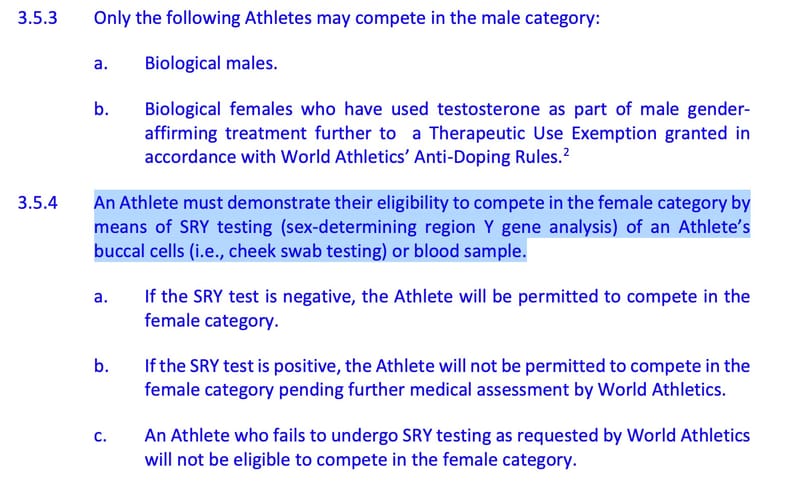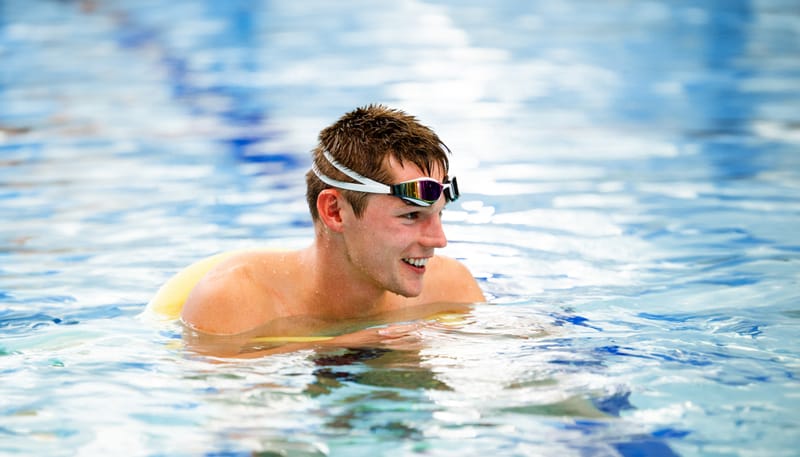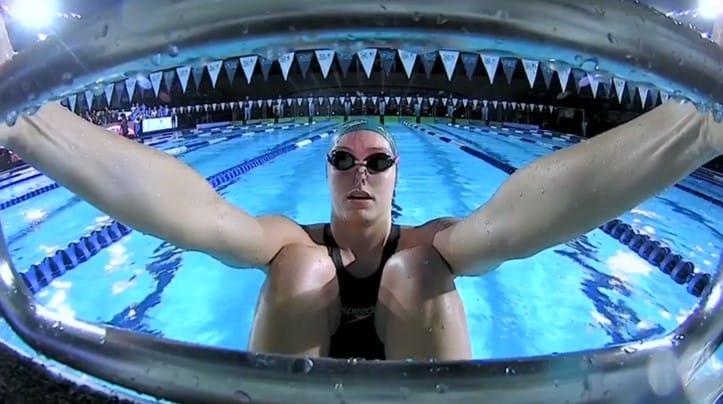How World Aquatics Is Handling The Olympic Squeeze On Swimming Numbers
How do you get more swims from fewer swimmers at the Olympics. Strict 50 stroke entry rules, further relay squeezes but freedom for any swimmer to get a secondary swim without qualification cut. Budapest 2027 Worlds to be a dress rehearsal of the new race schedule of the future
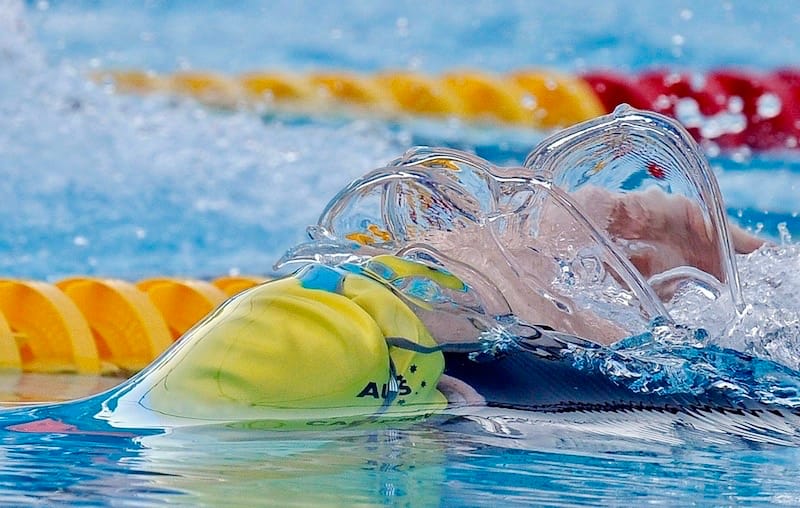
World Aquatics previewed its new Olympic pool qualification process for the new 50m stroke events with media, including SOS, last week.
The news take and overview here:

The departure does not include the 50m freestyle or any other event already on the Olympic program.
The dynamics, pace and conversation around the new stroke events - on backstroke, breaststroke and butterfly - with shift on the way to LA in a similar fashion to the journey the marathon underwent when the 10km, held at World Championships since 1991, joined the Olympics in 2008.
In that sense, the new approach to granting a form of golden Games ticket to pool swimmers in pre-Olympic season is part of the desire to give the new events a bigger lead-0in time to generate interest and help build the profiles of the protagonists who will pioneer their events in LA.
Of course, there is no hiding the intent to boost the attractiveness of a World Cup that has struggled to attract a consistent line-up of the very best (even though the prize money is now at its highest level ever), nor was there any attempt by the World Aquatics top team that invited SOS and other media to preview late last week, for reporting on as the IOC gets set to discuss and approve the move this week.
The discussion started with the size of swimming at the Olympic Games:
- 900 swimmers in Rio
- 878 in Tokyo
- 852 in Paris
Those were the quotas the IOC set in an attempt to contain the enormity of the Games as a whole.
Los Angeles will be tighter still: 830.
So, how to accommodate six new stroke events in LA as the numbers shrink. The selection process for the 50 strokes and the rules on relays is where we find the answers.
Important to note that Aquatics will have the same number of slots across all its disciplines in LA. Pool swimming has a slightly smaller share than it has at the previous three Games as women’s water polo grows, with two more teams in the tournament to equal the gender divide on the program.
World Aquatics has more than 2005 national members, of which, 194 are expected to send teams to LA, assuming the political landscape does not shift further in the direction of trouble already brewing in the world, or, if you happen to be Ukrainian, as one example among several, the trouble you are steeped in with great loss of life as a result to the illegal war that Putin is waging on a sovereign country.
Other predictions for LA also pump up the volume on 'bigger and great numbers', including more nations sending male and female athletes, a matter one would have hoped to see settled decades before the 2028 Games, yet now, in 2025 looks like a question that will be around for decades to come.
In the mix is universality: the more nations send a man and a woman, the more nations have a right to compete and eat into that quota of 830. About 10 extra slots are expected to be needed for universality athletes, or, another way of pouting it: 10 more wold-class swimmers may be left at home. That is the nature of the Olympic Games as a global event that transcends 'elite' and embraces 'relative elite'.
That is just one aspect of the quota war that swimming bosses must fight. It's a question of balance between the deep and shallow ends of the pool, says World Aquatics CEO/director Brent Nowicki:
“It’s our fight to take and win. We need more quota, that’s it: 40% of our budget goes into development … That’s a lot of money that we’re pushing to grow the sport. We’ve seen in Paris, even in juniors a great diversification of medals. We want to avoid those left -field surprises. We don’t want to lose out on really good swimmers who have really great races. That’s where we are right now. We risk having really great swimmers miss medals.”
Adding to that, strategic head and Chief Sports Officer, Mike Unger, who held a similar role at USA Swimming under previous management, told us:
“When we looked at time standards ... we do not want to lose athletes that will make the final or semifinal even. That’s a big factor for us, so there’s a balance. It’s important for us, it’s important for the IOC, that we have as many countries participating as possible.”
So, what does World Aquatics have in mind when in need of managing the squeeze on numbers?
The New 50m Stroke Events
Here's our news story outlining the basic, surface elements of the new qualification process that the IOC is expected to approve on Wednesday or Thursday this week;

After 6-lane finals in which nations can qualify a maximum of two swimmers and the six qualifications are in the bag in each stroke 50, the process reverts to the traditional A and B standard times on the way to there being 32 swimmers in each new stroke 50 event in LA, most of them athletes doubling up with other events, including relays.
The universality quota will be controlled with standard times not yet released yet.
Expect them to be 'tough'. There's just no other way.
What's tough enough?
- The new 50 stroke events will not be treated like other events. "Minimum time standards" will be based on prelims of the 2023 World Championships in Fukuoka - and “B” standards will only be around 1% slower than the “A” standard.
- The 14th-16th place finish at Paris 2024, where the shallow pool turned the heat down on the clock, is deemed not tough enough. To make sure the LA standards will meet the numbers test' the World Aquatics planning leadership of Nowicki, Unger and Craig Hunter reached for a standard around the 14th-ranked "entry time" from the Paris Olympics.
Here's what that looks like in practice, the second column of times - the 14th entry time at Paris 0 consistently faster than the Olympic qualification A target in the first column of times.
Women:
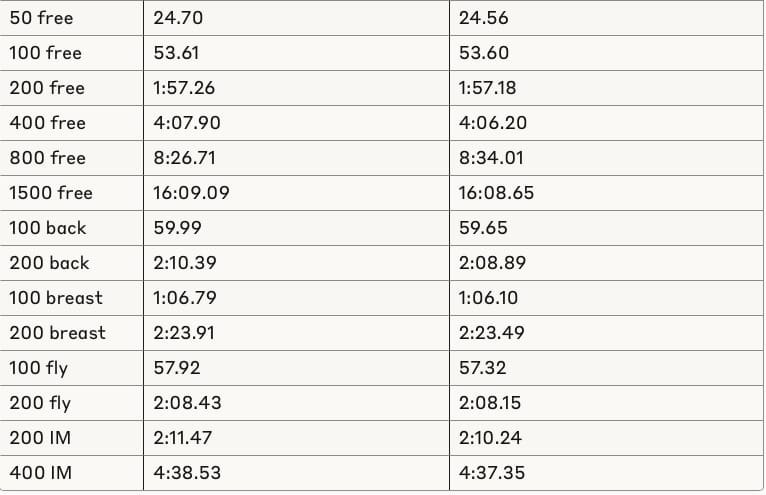
Men
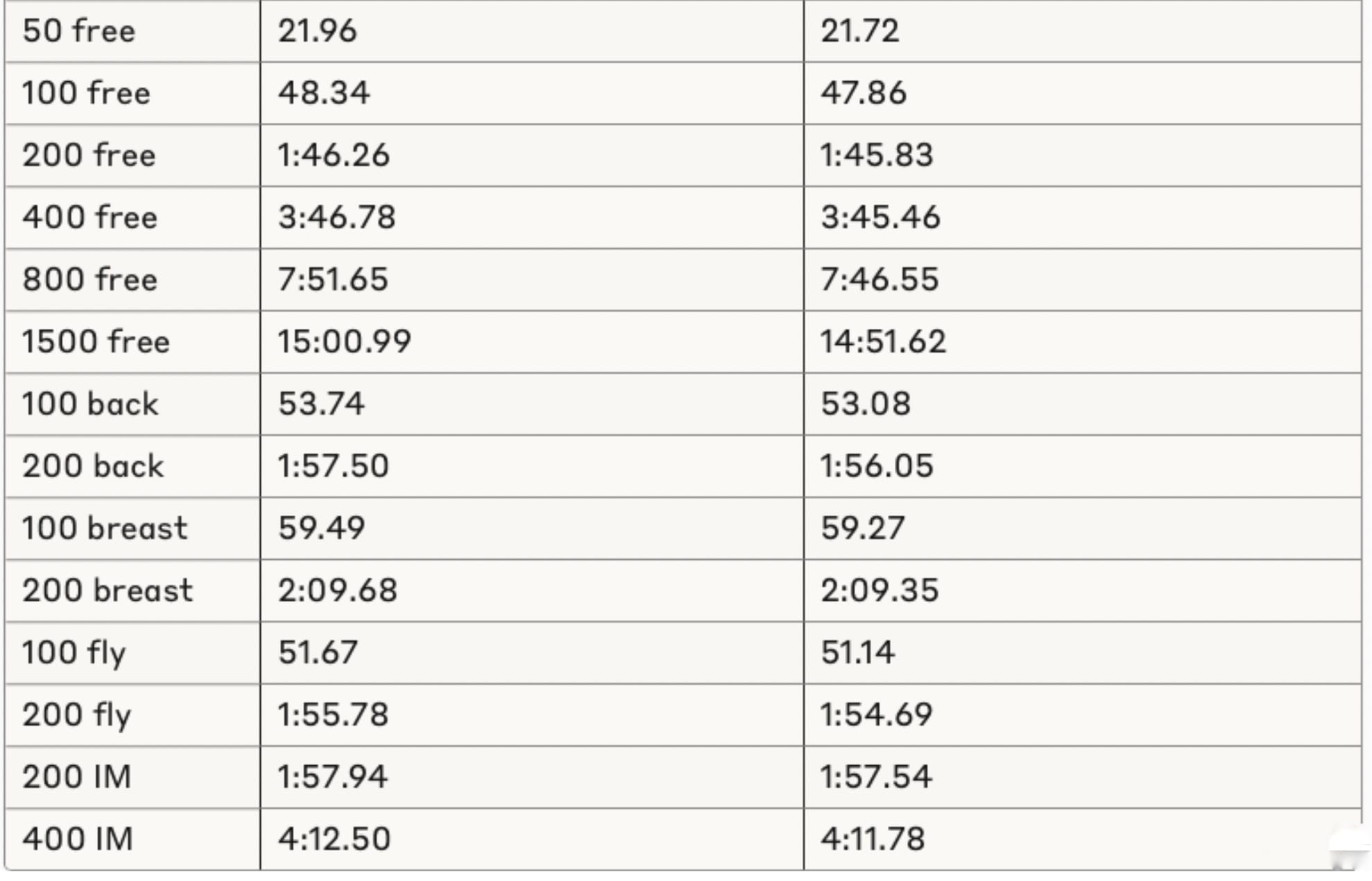
Good move: that reflects, as Unger noted, the career or season best of a swimmer beyond the best they had on the day and in the circumstances in Paris.
The big squeeze was making tough decisions a reality of decision-making, with the introduction of six new sports in LA adding to pressure that may blow on the way to Brisbane 2032.
There's also this: to date, any swimmers from the Refugee Team have not counted as pat of any quotas but for LA they will. World Aquatics is unhappy about that because it has no control over those numbers, yet has to account for the unknown. The potential result is for swimmers of the calibre to make semis or even finals will not make the quota cut.
On a different trajectory, pressure may also be reflected in more and louder voices calling for containment beyond pure numbers: the question of semi-finals for 200m events was raised in our preview briefing, for example. World Aquatics doesn't want them to go ... and yet, if needs must ... time will tell, and so will circumstances.
The sorry sight of 16 or 17 swimmers racing in heats, as has happened at recent World Championships - universality swimmers nowhere to be seen in the 200 'fly and such like - just so that 16 swimmers can race again in semis on the way to a final of 8, turns up the heat on the issue.
Even that will not be tough enough for the new 50 stroke events. Hence the use of Fukuoka 2023 as a benchmark for setting the 'minimum times' in a process apart from that for established Olympic events.
The crude details of the World Cup selection process can be found in our news take, in which we explain that NGOs and NOCs retain the right to decline the qualification slot if by accepting one, their own domestic trials procedure become a mockery - where the swimmer who takes a top 6 place at the Cup is then beaten by two others at home trials or fails to meet the qualifying time set by their nation, which is sometimes stiffer than the World Aquatics time cut.
Nations, federations, coaches and swimmers should pay close attention, regardless of what events they are focussed on: the stroke 50 qualification model may be something of a precursor for all events. Nowicki told us to think of it as a “first step to modifying format” for big championship events in the future.
The Relay Crunch
In recent Olympic cycles, the top 16 relays in the world, one per nation, qualify on time for the Games.
Make that 12 for LA. But there will still be more relays in the fight: 4 qualified men, or 4 qualified women, or 2 men and 2 women (mixed) will be able to enter relays for their country if that country did not make the best 12. That may well lead to more than 16 relays entering the fray - the numbers making that possible will reflect not growth but a reduction in overall numbers.
Relay-only swimmers are ion a pathway to extinction, meanwhile:
To date, nations with 6 or 7 relays (men x 3, women x 3, mixed, 1) have been allowed to include 12 relay-only swimmers in their squad. For LA, that number will fall to 8, while nations with fewer relay entries will also face a drop in the relay-only numbers ion their team, like this:
- 1 Relay qualified - 2 additional swimmers
- 2 Relays - 3 additions
- 3 Relays - 5 additions
- 4 Relays - 6 additions
- 5 Relays - 7 additions
- 6 or 7 Relays - 8 additions
Nations may now want to consider entering more relays as a way of bumping up their relay-only swimmer numbers.
There's a twist in the numbers game... and further chances for relay-only swimmers to step into individual events even if they have not swum inside the qualification standard for that solo race.
Enter All You Can Race
Hunter noted that tweaking the event order and timeline in sessions to encourage and accommodate the busy schedules of the likes of Léon Marchand and Summer McIntosh was “for the benefit of the sport as a whole” rather than any specific athlete. Think of the impact of Marchand in Paris: gold not just for him and France but swimming as a sport.
Now, the squeeze on numbers has also prompted World Aquatics to rule that any swimmer already on a team can swim as many events as their selectors want them to.
It's a way of reducing all those team camera shots showing a lot of swimmers ups in the stands day after day with no swim on their hands, while events go by with one entry or no entries from the relevant nation.
Unger, who pointed to the NCAA as an example of a similar syndrome under old rules, asked why a swimmer with a A time in the 400 free on day 1 of racing is to be found sitting inn the stands when the 400IM unfolds days later even though his nation just has one swimmer in the water.
NB: World Aquatics will move to expressing the target times as “A” and “B” rather than the clumsy “Olympic Qualifying Time” and “Olympic Consideration Time”
To help encourage teams to add swimmers to additional events, the need for the swimmer to meet a qualifying time to take on a secondary event, such as that 400IM as a bonus swim, will be dropped.
So, fewer swimmers overall - but more swims when secondary swims can unfold without the constraint of time-standard requirement.
That solves this issue: nations with one A standard swimmer cannot enter a second swimmer without a time standard in the qualification period. Now, any swimmer win the team that selectors wish to add to an event, up to the standard two per nation maximum, can be added.
That new condition will apply to solo and relay swimmers - but not universality entrants.
The Timeline
Organisers are not yet ready on an LA schedule that has many versions so far bu here are some scheduling details that selectors, coaches and athletes may find very useful:
- The Budapest 2027 World Championships will, for the first time, mirror the Olympic schedules a dress rehearsal for LA, across 9 days. The twist: Budapest will also be a test of an Olympic schedule that can then be tweaked by World Aquatics within a day of the action to take account of any issues that may turn out to have been overlooked in planning when reality unfolds.
- The schedule will not resemble anything we recognise in current schedules: it will reflect the lessons learned from the permutations Hunter, Unger, Nowicki and team have worked through to accommodate and account for the additional 50 stroke events.
Commentary will follow in the days ahead.



